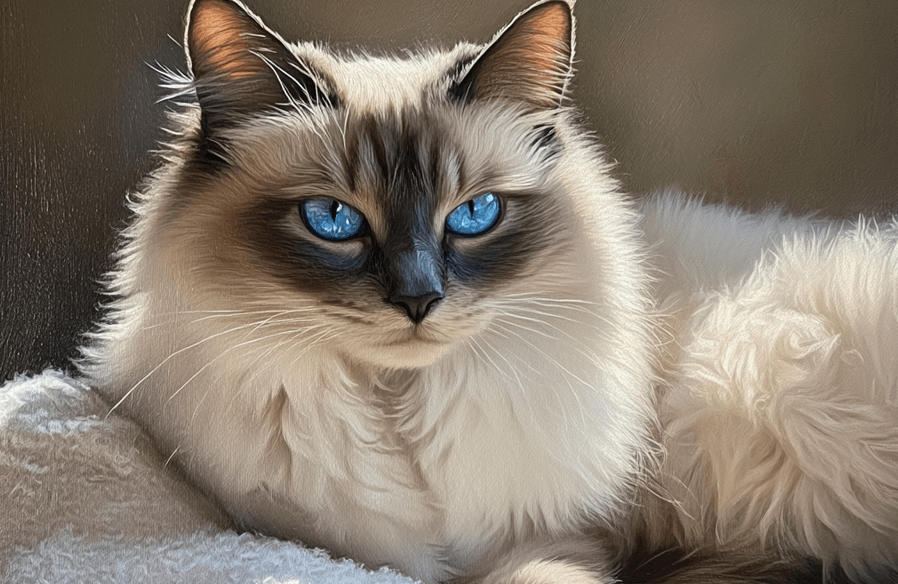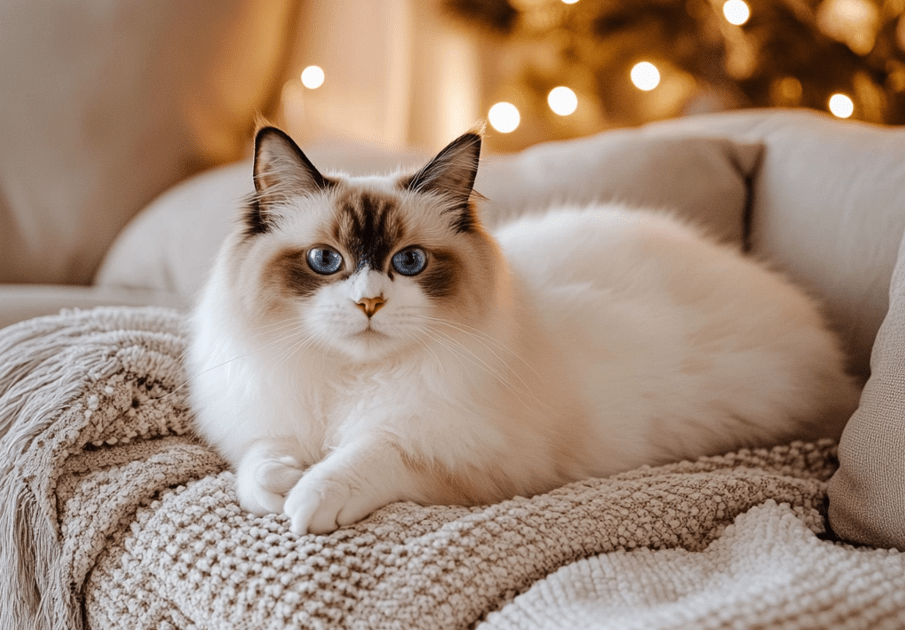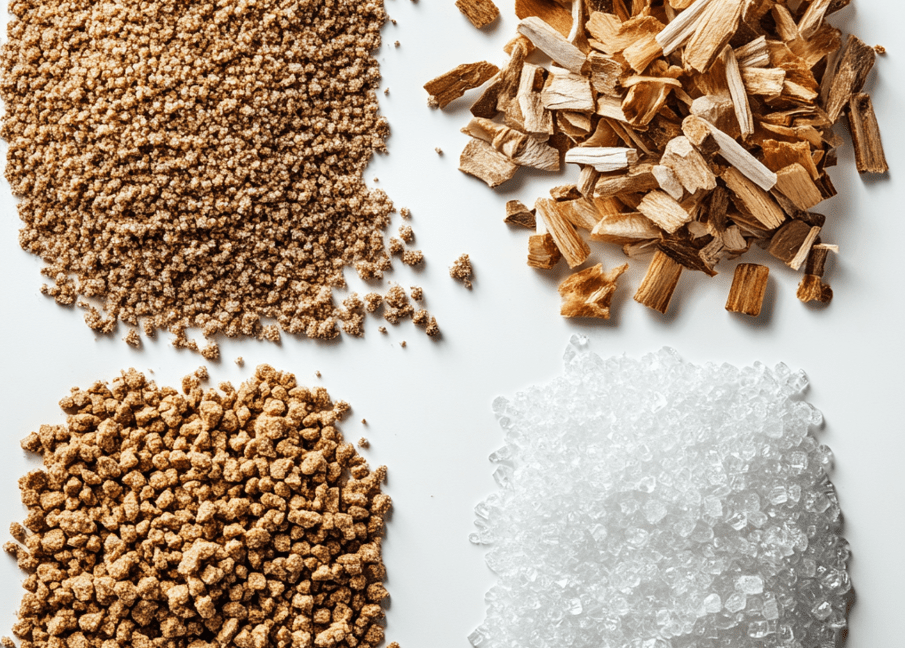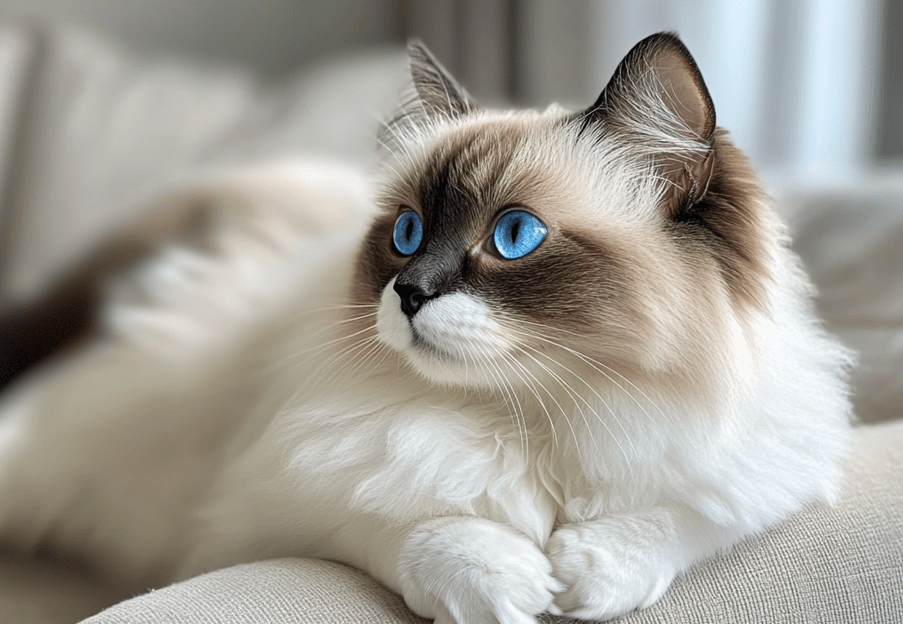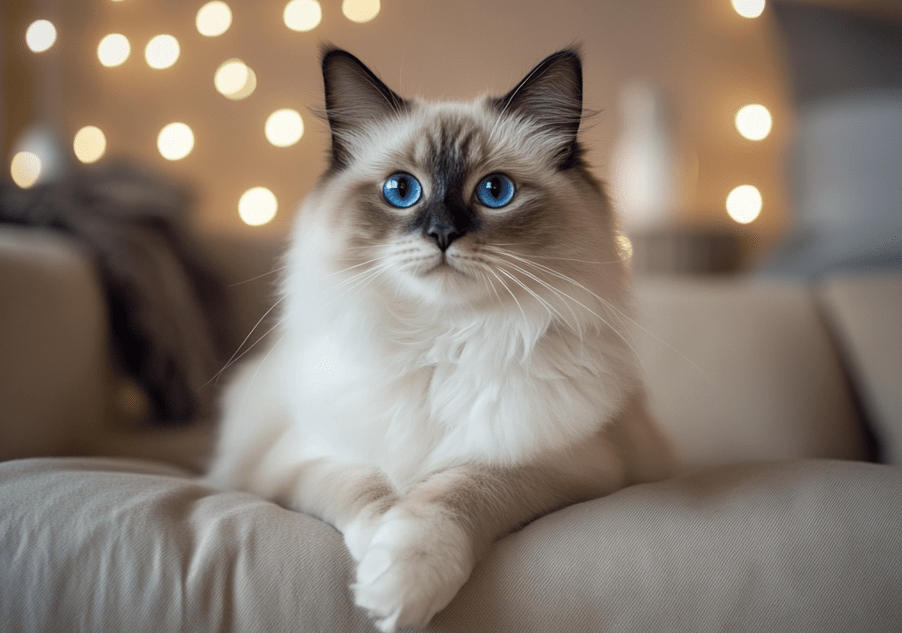
If you wish to adopt a friendly and loving kitty to your home, this Ragdoll cat adoption guide will help you have a smooth and happy adoption process. So if you are thinking about bringing home a Ragdoll cat, it is good to think about whether it matches your lifestyle. Ragdolls are not only known for their strikingly beautiful blue eyes and adorable, expressive faces, but they also have a calm, relaxed demeanor that makes them particularly appealing to many cat lovers. Their easy-going personalities and affectionate nature make them excellent companions, but it’s important to understand the breed’s specific characteristics and needs before making a decision.
Ragdolls also have a unique behavior set that may or may not fit well with every household, from their weird “floppy” behavior when carried to their high devotion to their human family members. So, here in this article, I will discuss with you ten things that you don’t know about a Ragdoll that you should know before adopting one, so you could give your Ragdoll the best caring and loving home.
How to Prepare for the Adoption of a Ragdoll Cat
Before bringing a Ragdoll cat into your home, you need to ensure that your living environment is suited for this large breed. Adoption of a ragdoll cat requires more than just a warm bed – they need space to move around comfortably, and owners should ensure there’s a designated place for them to socialize and relax. Since Ragdolls enjoy being with their human family, providing them with the attention they deserve is essential for a happy and healthy relationship.
The Importance of Adoption from a Reputable Ragdoll Breeder
When considering adopting a ragdoll cat, choosing a reputable breeder is essential. A good breeder will ensure that the kitten has been properly socialized and is free from common health issues such as hypertrophic cardiomyopathy (HCM). Additionally, a breeder will provide you with necessary health checks and documentation to help you ensure that your new pet is in the best condition possible.
Adopting a Ragdoll Kitten: What You Need to Know
When it comes to adopting a ragdoll kitten, there are several important factors to consider before making the decision. Ragdoll kittens are known for their sweet and affectionate nature, but they do require a lot of attention and care. As you prepare for the adoption process, it’s crucial to understand their unique behaviors and needs. From their floppy nature to their gentle temperament, Ragdoll kittens can make an excellent addition to your family.
Key Tips for Adopting a Ragdoll Kitten
If you’re adopting a ragdoll kitten, one of the first things to keep in mind is their grooming needs. Ragdoll kittens have beautiful, silky fur that requires regular brushing to prevent matting and reduce shedding. In addition to grooming, Ragdoll kittens are highly social, meaning they thrive in environments where they receive plenty of love and attention. Ensure that you have the time and energy to dedicate to their needs, especially in the early stages of adoption.
Floppy Cats
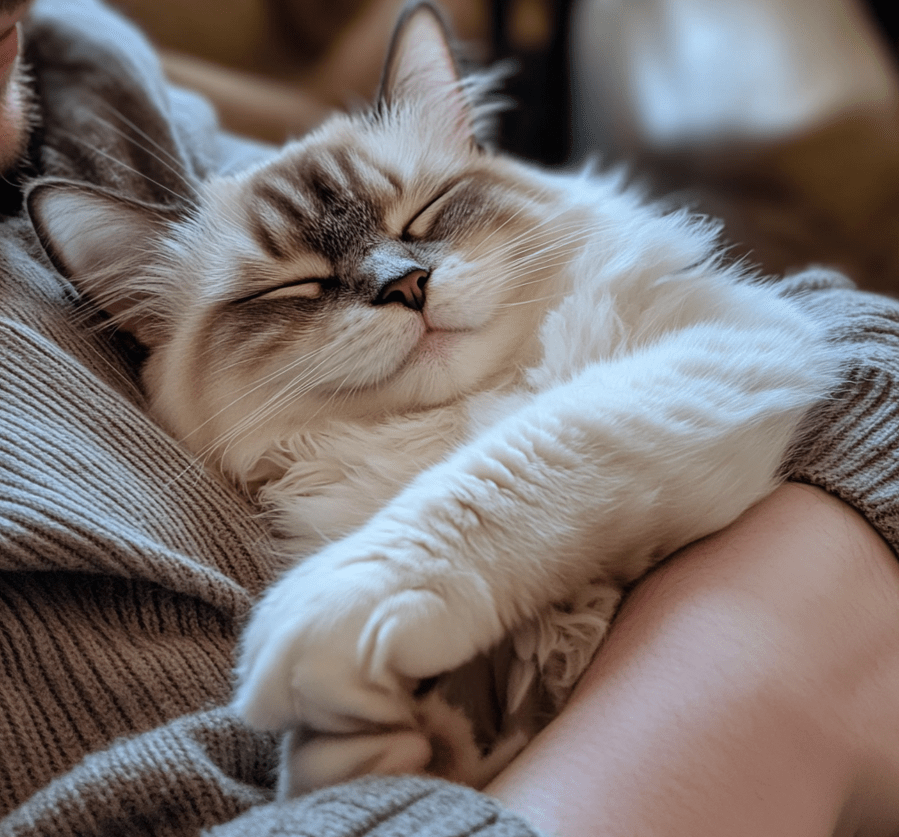
Ragdolls got their name from a unique characteristic for this breed—they go limp and relax when you pick them up, similar to a soft ragdoll toy. And that’s why they’re often referred to as “floppy cats.” Ragdoll don’t mind being held or carried around like a baby and actually enjoy the attention. Because of their loving and gentle personalities, they feel very safe and comfortable in your arms and can often be found chilling out and flopping. Not every Ragdoll will demonstrate this behavior, although most of them have this same personality. However, the vast majority of Ragdolls enjoy being held and snuggled by their people.
Puppy-Like Personality
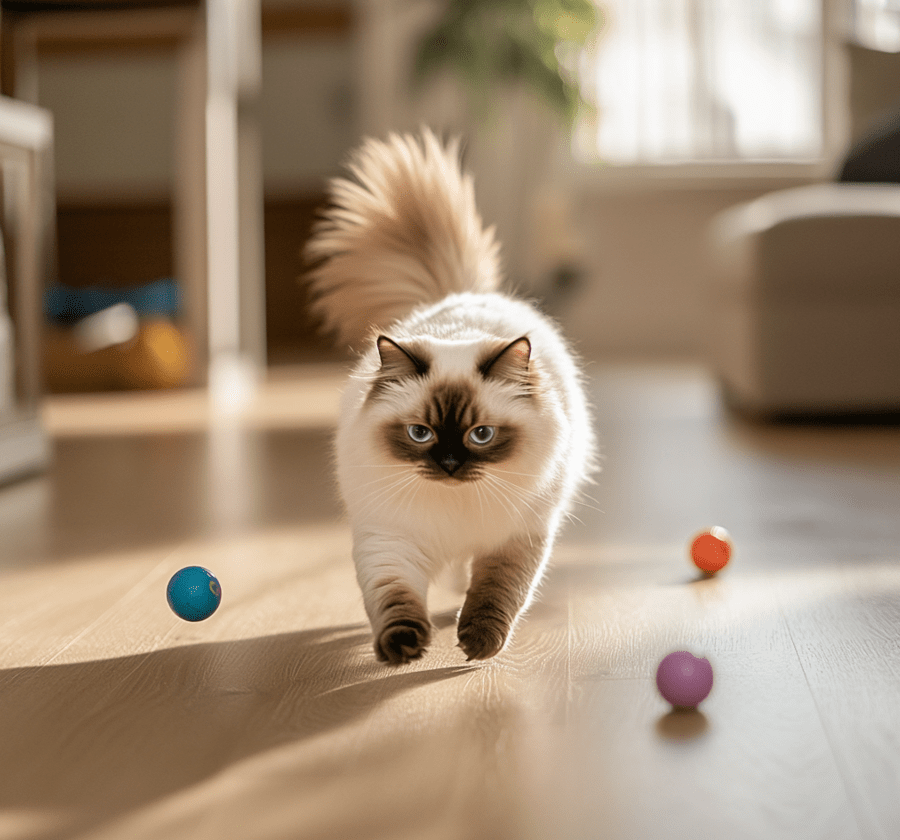
The nature of Ragdoll cats is described as sweet, gentle, mellow and similar to dogs. These cats are highly social and bond well with members of their human family. They will frequently shadow you about your home, searching for company and companionship. Similar to a dog, a Ragdoll will greet you when you walk in the door, wagging its tail, and it may even curl up on your lap when you are ill or if you are lounging on the couch. They also tend to be good with children and other pets in the house, making them a fantastic family dog breed. They are also a very social breed and some Ragdolls will even play fetch; a behavior not found in the majority of cats and one more reason to love having them around.
Appearance
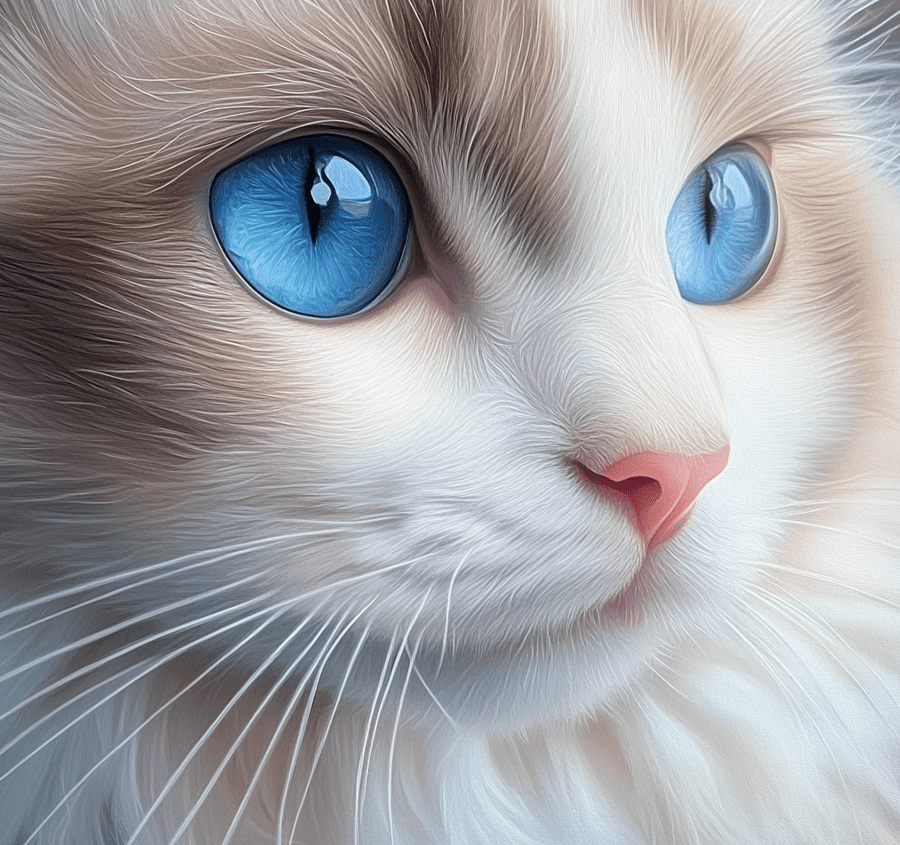
One of the signature features of the Ragdoll breed is its gorgeous, deep blue eyes. With eyes that match their semi-long, silky coats, they have a noble and elegant appearance. There are four basic coat patterns for Ragdolls: bicolor, van, mitted, and colorpoint. All come in a variety of colors, including seal, blue, chocolate, lilac, red, and cream. Ragdoll kittens are all born pure white, their unique color points gradually develop with age between 8 and 12 weeks when their color markings become noticeable. Their soft, luxurious coats need a lot of maintenance to keep them looking beautiful and prevent from matting. One of the most beautiful cat breeds must be Ragdolls, boasting unique coat patterns and vibrant blue eyes!
Life Expectancy
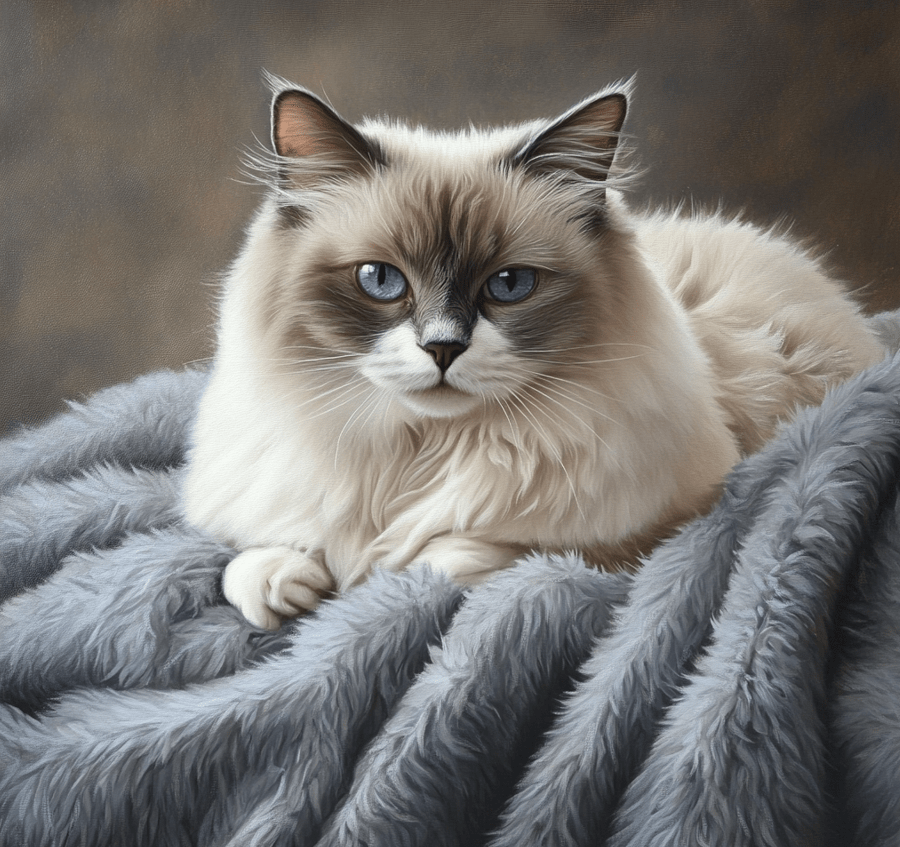
Ragdoll cats are known for their long lives — usually ranging between 15 and 20 years. Potential factors for a longer life include providing a good diet, keeping them indoors, and seeking appropriate medical care. Some Ragdolls have lived for as long as 25 years. This breed matures slowly: Ragdolls don’t reach their final adult size until they are 4 years old.
Hypertrophic Cardiomyopathy (HCM)
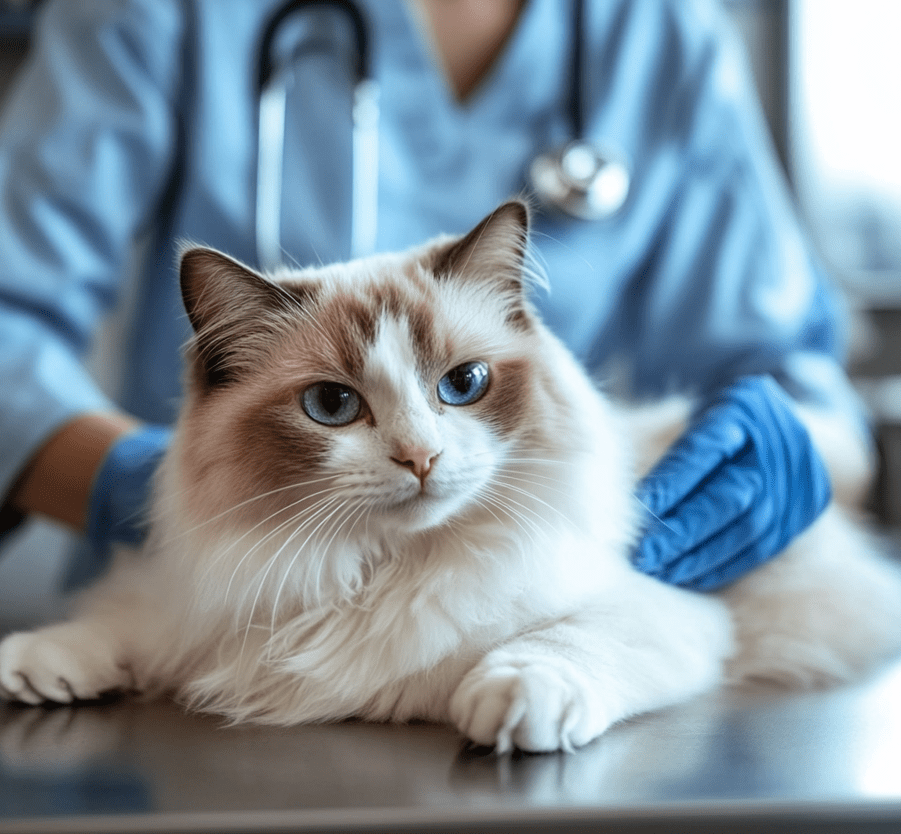
Cats can suffer from hypertrophic cardiomyopathy (HCM), the most common heart disease in cats, and an issue that is a particular concern for Ragdoll cats. This genetic disorder causes thickening of the walls of the heart, which shrinks the size of the heart’s pumping chambers and leads to the heart working less efficiently and can cause sudden cardiac death. Reputable breeders should test for the HCM mutation and guarantee that their kittens don’t have that genetic defect. These health tests are important to minimize risk of HCM, so it’s very important to adopt a Ragdoll from a breeder who performs these tests.
Dislike Being Left Alone
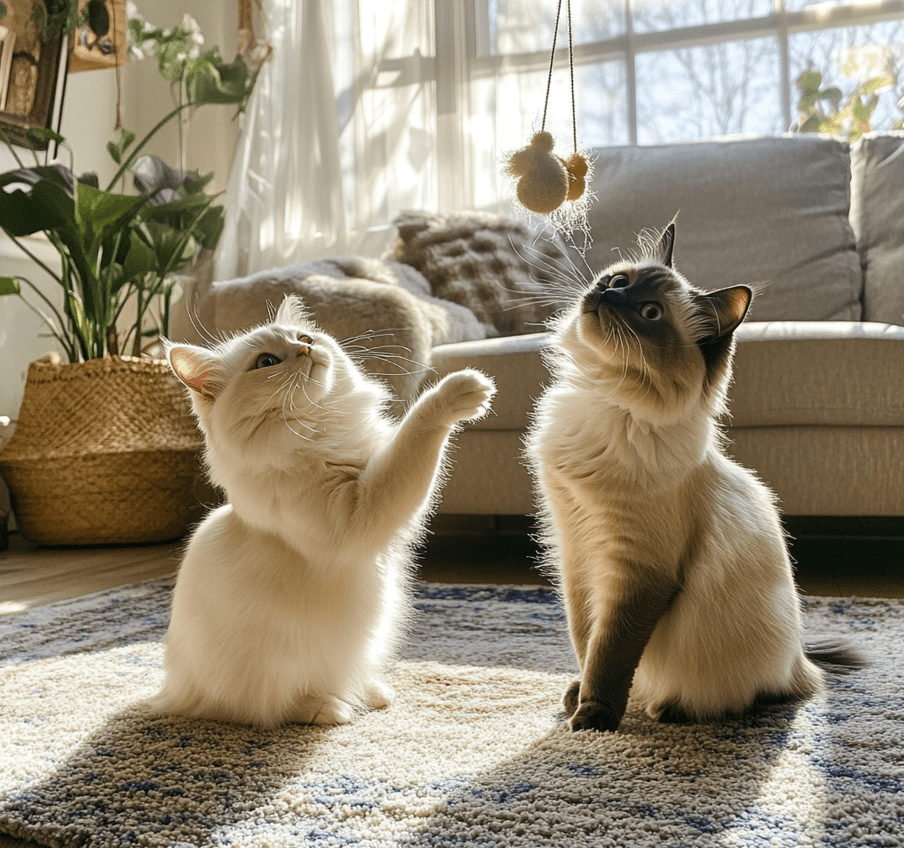
Ragdoll cats are very social cats and they require more attention than many other breeds. If you are away from home for long periods of time, it is a good idea to get your Ragdoll a companion. This keeps your furry friend from feeling lonely when you are busy at work or even asleep. The presence of another pet will help to alleviate any stress caused by unmet social needs in both you and your cat. Ragdolls can also become destructive if left alone for long periods of time such as scratching furniture or pushing items off tables. So they should not be left unsupervised. The way to avoid this is to integrate a proper scratching post that helps the cat avoid this sort of behavior.
Large Size
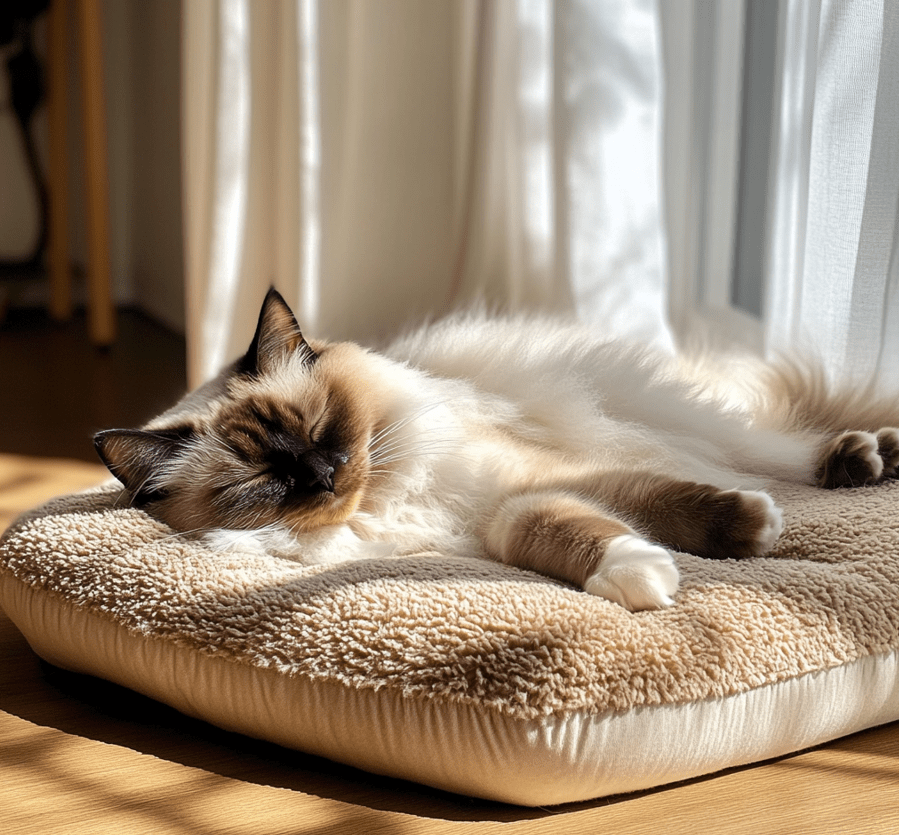
Ragdolls cats are large cats. Adult males may reach 20 pounds, and most females range from 8 to 15. Though Ragdolls are large, they do not have a strong hunting instinct and are not especially adept at self-defense against stray animals. For their safety, they may also be kept indoors. Their large size gives them a bear-like, snuggly quality, so they’re great for cuddling. Due to their size, they require a two-handed approach for proper support. The litter box and bed should also be sized appropriately for their comfort since their physical body will certainly require some adjustments in their living space.
Shedding
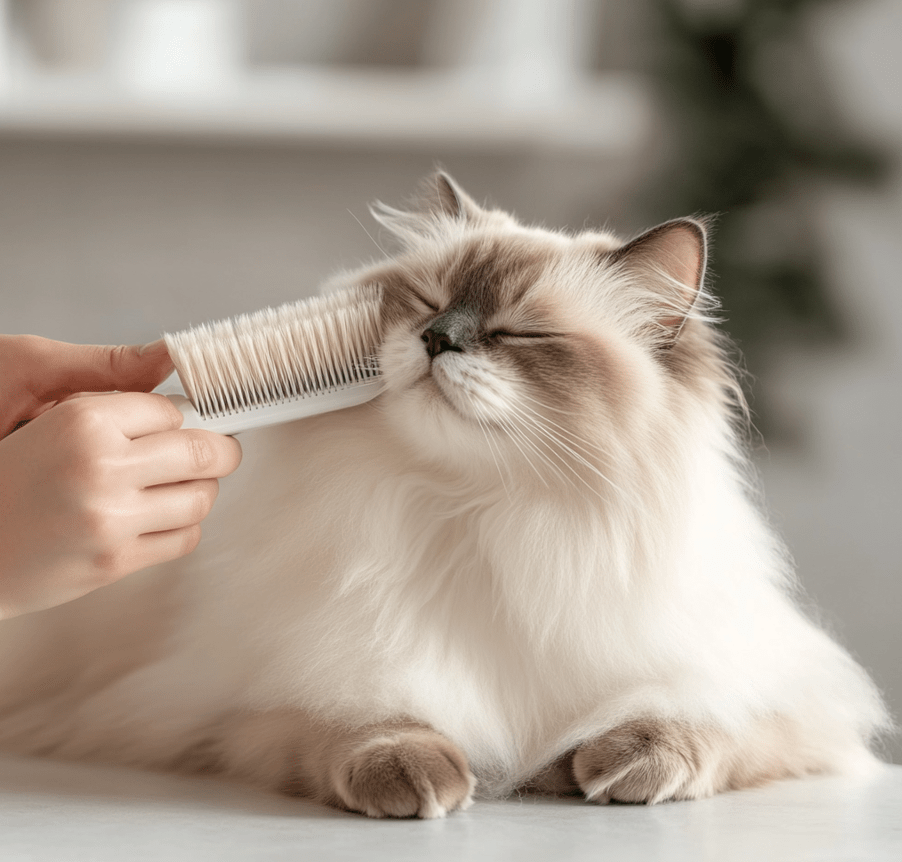
Ragdoll cats are long-haired breed and therefore shed naturally, and the amount depends on seasonal changes, temperature and diet. In winter, they grow a winter coat, which they lose in spring. Regular brushing is important to avoid mats, tangles and too much shedding. Most Ragdolls would find the grooming bonding experience enjoyable. They require daily brushing to keep their coat in good condition, so tips on how to groom them would be beneficial for cat owners.
Not Hypoallergenic
Ragdolls are not hypoallergenic cats. Though they don’t have a very dense undercoat (which can help minimize dander), most cat allergies come not from dander, but proteins found in their saliva. During self-grooming, saliva coats the fur, and when the fur falls out, dried saliva can be found on furniture and the floor of your home, which can also cause allergy react.
Cost
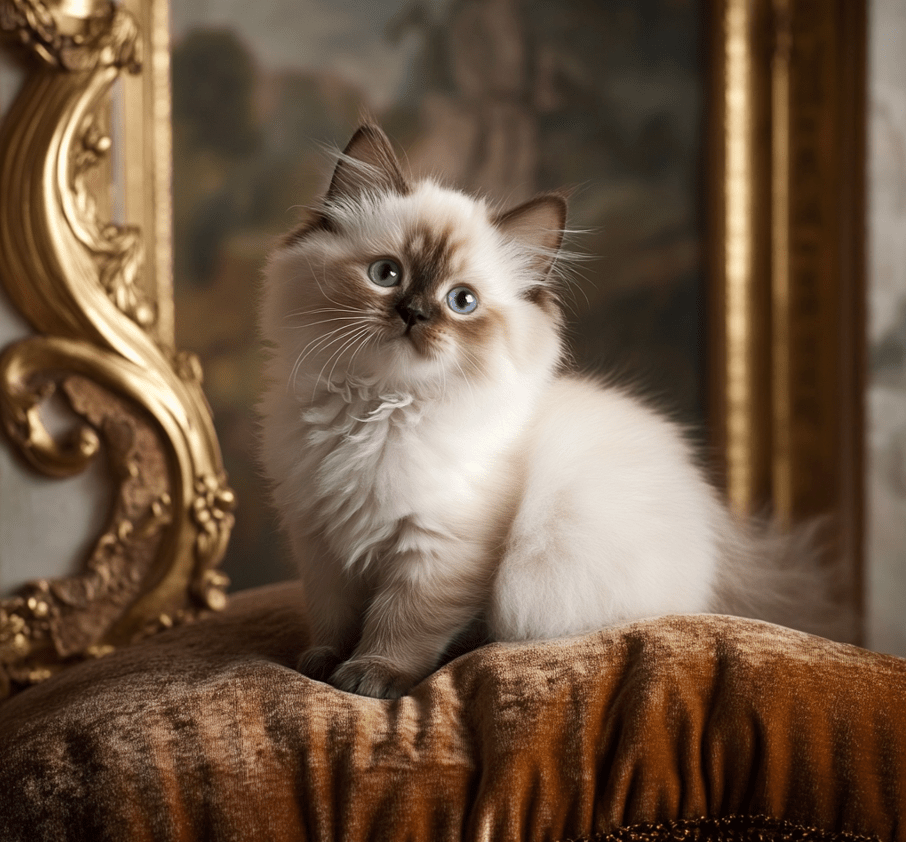
Buying a purebred Ragdoll cat can be quite an investment. In the United States, kittens from ethical breeders of The International Cat Association (TICA) registered cats generally range from $1,500 to $3,500 depending on the cat’s quality and coat pattern.) Cats are categorized as pet quality and show quality. Show-quality cats conform to the breed standards and have a temperament that makes them ideal for competitive showing.
Adoption of a Ragdoll Cat: Benefits and Considerations
The adoption of a ragdoll cat brings an opportunity to welcome a loving and loyal companion into your home. Ragdolls are known for their docile personalities and their ability to bond deeply with their human families. Whether you are adopting a kitten or an adult cat, Ragdolls are known to require a lot of social interaction and enjoy being the center of attention. Before adopting, it’s important to assess the space in your home and ensure you can meet the needs of this affectionate breed.
Final Thoughts
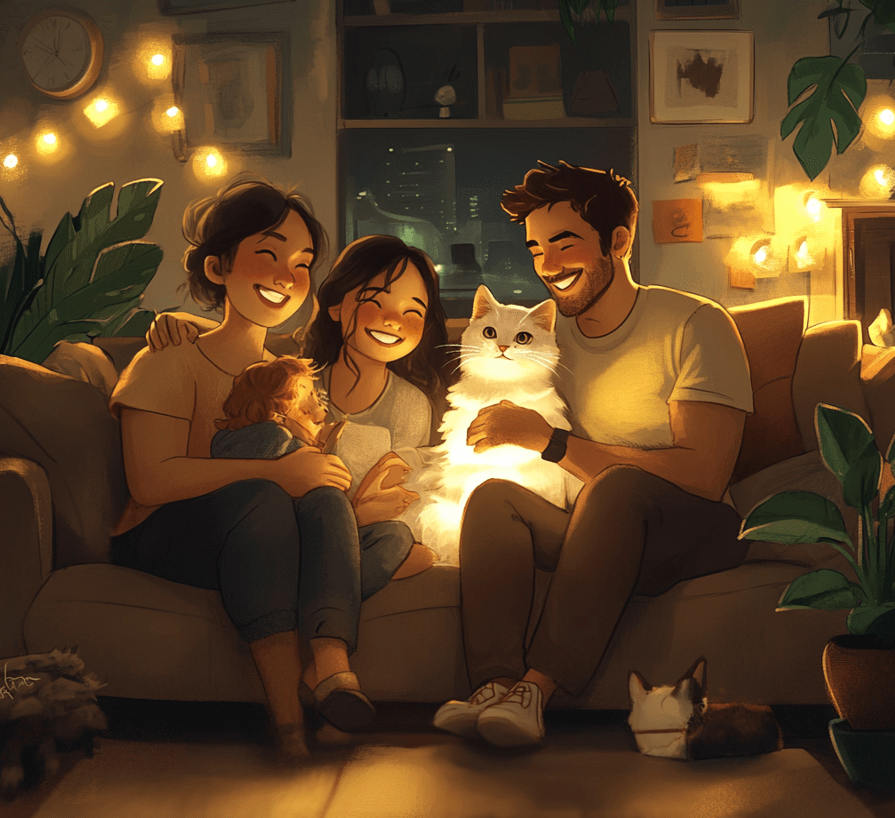
Ragdoll cat is a special breed in terms of being a loving, gentle and attractive. With their floppy bodies, puppy demeanor, and sociable nature, they make great companions for families and individuals. However, they need a very devoted and caring owner to meet their individual needs, such as frequent grooming, social interaction and being attentive to health issues. By being aware of their size, potential health problems like HCM, and the costs involved with their care, you set yourself up for success in offering them a loving and happy home. These beautiful creatures can be expensive to acquire, but the warmth Ragdolls bring into our lives is more valuable than money. If you are prepared to offer time, care, and resources, a Ragdoll cat can be a charming and fulfilling member of your household.

